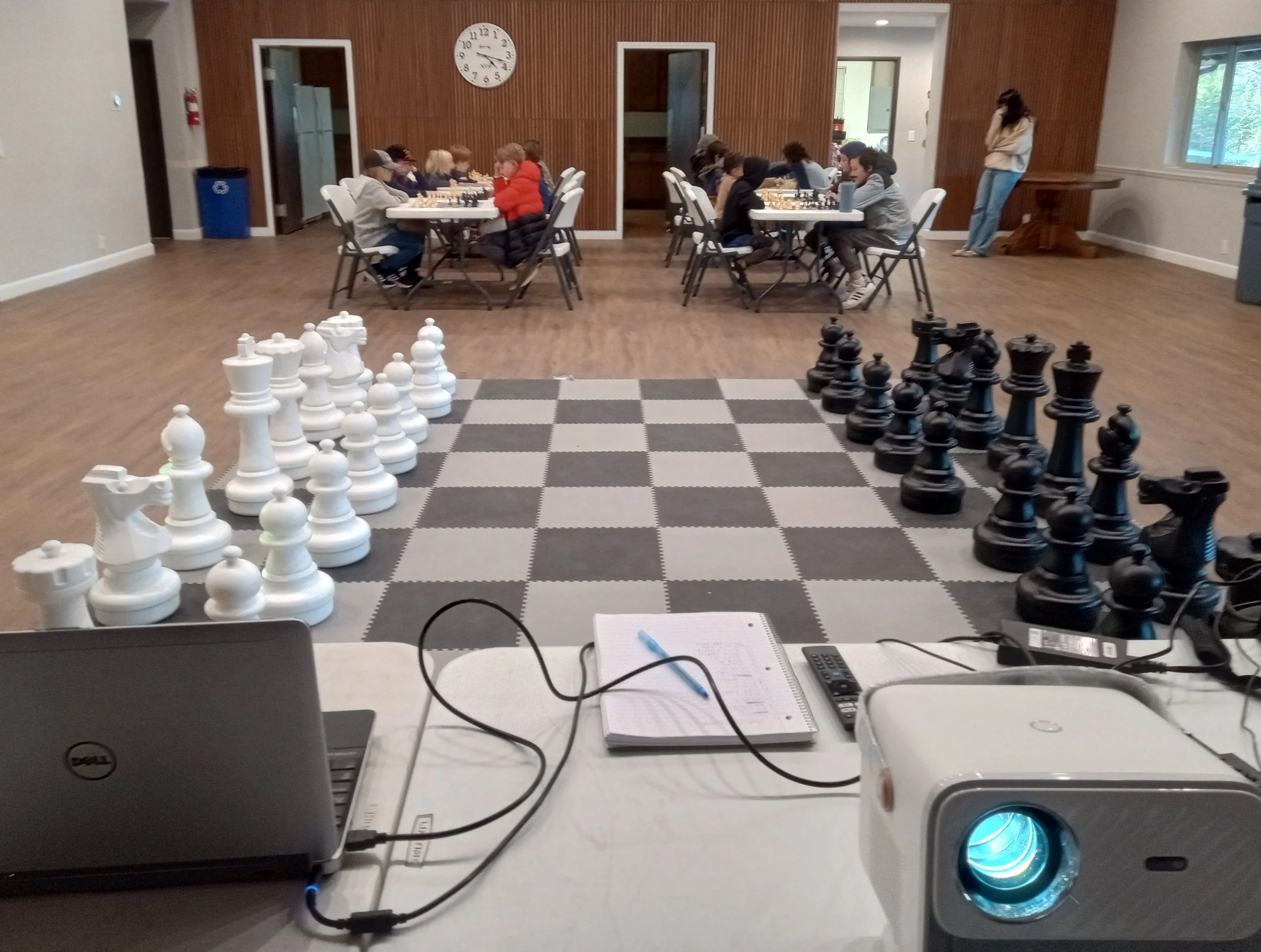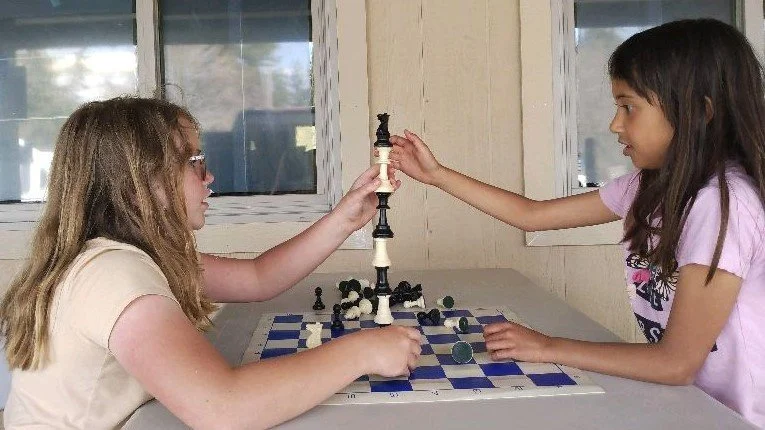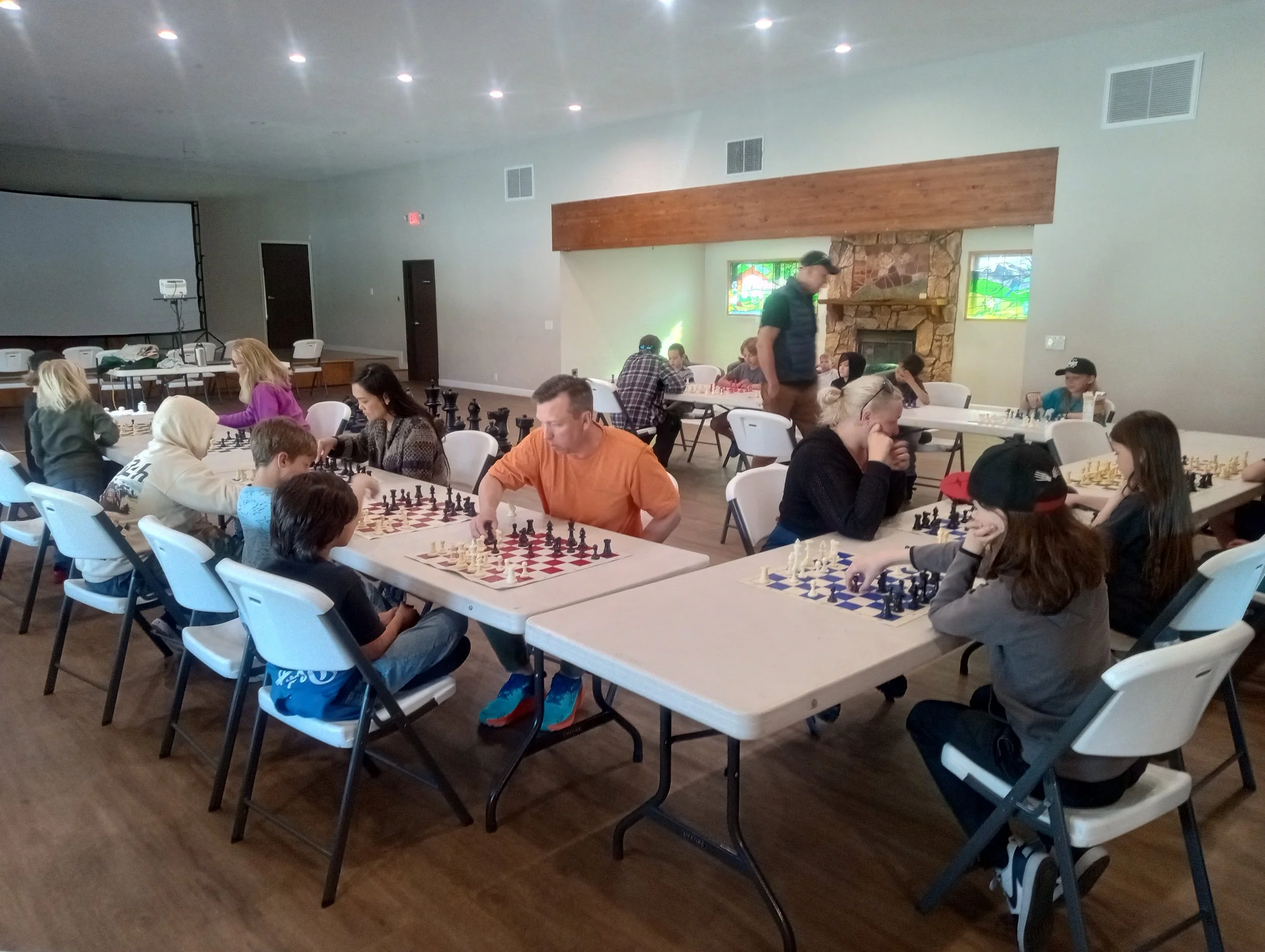Chess 2 Curriculum Introduction for Post Beginners:
My teaching philosophy is to make learning chess fun! From the lessons to the activities, it is important to make the learning process interesting and engaging. I have a background in education, and I enjoy finding creative teaching solutions for chess. My lesson plans come from years of teaching experience, studying chess, games played, analysis, and developing a love and appreciation for this beautiful and timeless game. My background in both education and chess have helped with my lesson planning & implementation. There are a lot of nuances to teaching chess. You must understand your student's skill level & which teaching methods they respond well to. You must find the right tempo with the length of lessons, feedback, & activities. It is important to make sure they are learning what you're teaching them. You must check for understanding. I find the Socratic teaching method works well, but not all kids learn the same way. There is a lot that goes into giving kids a quality chess education. Finding a highly qualified chess teacher can be challenging. You can hire a grandmaster to teach chess, but they might not be a good teacher, or you could find a good teacher, but they know little about chess. My lessons evolve over how the kids are learning, and it's important to be flexible and modify the chess curriculum to fit the needs of the students.
In addition to teaching chess online, I also teach in-person chess classes. In the pictures below are some of my chess classes. Notice the jumbo screen with a projector and audio equipment to make lessons efficient & engaging. Notice the giant chess set and DGT board for fun activities. In one class I had a parents vs the students event, which was a fun activity for all. Other fun activities we enjoy are chess bingo, simuls, team events, piece stacking, live music with chess songs we write covering lessons taught in class, etc. My strategy is usually a lesson first while checking for understanding (I ask my students lots of questions during lessons to check for understanding), followed by fun activities that support the lessons.
I carefully plan lessons to be challenging, but not beyond their scope of understanding. I choose appropriate level positions for students to solve that are relevant to the lesson. Timing is also crucial. The lesson should not be too long, nor too short. The students want to enjoy the learning process. Finding the right rhythm and balance is important.
The lessons should also be harmonious. If the students are ready for a lesson on how to create and control open files, then that should be followed with a lesson on what to do with open files.
It is important that students come away from a lesson with some concrete knowledge that they can use.
Chess 2 Curriculum (Post Beginners):
Section 1 – Endgames
Lesson 1
• King & Rook vs King
• Push the King to the Edge of the Board
• The Waiting Move
Lesson 2
• Understanding the King
• Use Your King!
• Opposition
• King & Pawn Endgames
• The Centralization of the King
• Mini Games (Blue & Step Books)
Lesson 3
• Endgame Miscellaneous
• The 3 Golden Rules in the Endgame
• What Can and Cannot Mate vs Lone King
• Minor Piece vs Queen
• Minor Piece vs Pawns
• Stalemate Alert!
• The Fox & the Chicken Coup
• The Deep Freeze (When One Pawn Kills Two)
• The Square of the Pawn
• Mini Games (Blue & Step Books)
Section 2 - Tactics, Tactics & More Tactics!
Lesson 4
• Advanced Forks & Pins
• Forks from All Pieces
• Absolute & Relative Pins
Lesson 5
• New Tactical Ideas - Part one
• Eliminating the Defense
• Queen Sacrifice
• Discovery
• Back Rank
• X-Ray
• Promotion
• Double Attack
Lesson 6
• New Tactical Ideas - Part Two
• Overload
• Deflection (AKA Diversion)
• Decoy
• Attraction
• Destruction
Lesson 7
• New Tactical Ideas - Part Three
• Line Clearance
• Square Clearance
• Obstruction
• Zwischenzug (AKA Intermediate Move or Intermezzo)
Section 3 – Art of Defense
Lesson 8
• Variety of Defenses (Step 2)
• Defending against Checkmate
• Getting out of Check
• Choose the Correct Capture
• Defending against a Passed Pawn
• Defending against Scholar’s Mate
Section 4 – Strategy
Lesson 9
• Three Keys to Chess Strategy
1. Material
2. King Safety
3. Freedom
Lesson 10
• Improving the Pieces
• What is the worst piece & how to make it better?
Lesson 11
• Time for a Tempo
• What is Time in Chess?
• Why is Time Important?
• What is Winning & losing a Tempo in Chess?
• Desperado
• Kasparov’s Philosophy on “Material, Quality, & Time”
Lesson 12
• Space
• What is Space in Chess?
• How Do You Create Space?
• Is Creating Space Important?
• The Big Squeeze
• Can Space Become a Liability?
• The Dark Side of Space
• Block Before You Punch!
Lesson 13
• Open Files
• What is an Open File?
• Why are Open Files important?
• Rooks love Open Files!
• How do you Create & Control an Open File?
• Thoughtful doubling or tripling of heavy pieces (queen & rooks) on the Open File
• The Use of an Outpost
• Controlling the Endpoint of a File to Prevent Your Opponent from Contesting it
• You have Gained Control of an Open File…. Now What?!
Lesson 14
• Rooks on the 7th Rank
• What does “Rooks on the 7th” mean?
• Why is a Rook or Rooks on the 7th Rank Important? How does it help you?
• Extending the 7th Rank
• Windmill
• Defending Your 7th Rank
• To Defend or Counterattack when your opponent has a Rook on your 7th Rank?
• Anything protecting g7, b7, g2, or b2 when you have two rooks on the 7th rank usually forces checkmate
Lesson 15
• Trading Pieces
• Part 1 – Trading Queens
• Is Trading Queens a Big Positional Decision? How Does it Change the Position?
• What are Important Things to Consider When Deciding on Whether to Trade Queens?
• Part 2 – Trading Other Stuff
• To Trade or Not to Trade?
• The Strategical Importance of Exchanging Pieces
• General Guidelines of Trading Pieces in Relation to Material, Freedom, & King Safety
Lesson 16
• Is the Knight Strong or Weak?
• Knight Paths
• Outposts
• Blockades
• Other Posts
• Knights on the 6th
• Knights on the Rim
Lesson 17
• Is the Bishop Strong or Weak?
• Open Diagonals
• Open Center
• Outposts
• Closed Center
• Closed Positions
• Opposite Color Bishops
Lesson 18
• Bishops vs Knights
• Open vs Closed Positions
• The Battle for Activity, Outposts, & Passivity
Lesson 19
• Is the Rook Strong or Weak?
• Activity
• Open Files & Ranks
• Rooks on the 7th
• Rook Lifts
• Rooks Behind Passers
• Closed Positions
Lesson 20
• Pawn Structures
• Are Pawns the Soul of Chess?
• What Role do Pawns Play in the Creation of Space?
• What Makes Pawns Weak?
• What Makes Pawns Strong?
• Pawn Chains (Nimzowitsch)
• Rams, Pawn Breaks, & the Transformation of Pawn Structures
Lesson 21
• SUPERKING
• Creativity in Chess
• Exceptions to the Rule
• Sometimes the King Must Think Outside the Castle
Section 5 - Opening Principles
Lesson 22
• How Quickly & Safely Can You Complete the 3 Golden Rules in the Opening?
Lesson 23
• Six Opening Concepts
• Harmony
• Center
• Safety
• Development
• Time
• Initiative
Section 6 – Checkmate Patterns
Lesson 24
• Mate Patterns with the Rook & Knight
• Anastasia’s Mate
• Arabian Mate
• Hook Mate
• Vukovic Mate
Lesson 25
• Mate Patterns with the Rook & Bishop
• Greco’s Mate
• Opera Mate
• Morphy Mate
• Pillsbury Mate
Lesson 26
• Mate Patterns with Two Bishops & Two Rooks
• Boden’s Mate
• Double Bishop Mate
• Blind Swine
• Ladder Mate
Lesson 27
• Mate Patterns with the Bishop & Knight
• Suffocation Mate
• Collaboration Mate
Lesson 28
• Mate Patterns with the Queen & Bishop
• Balestra Mate
• Shepherd’s Mate
• Damiano’s Bishop Mate
• Max Lange’s Mate
Lesson 29
• Mate Patterns with the Queen & Rook
• Railroad Mate
• Triangle Mate
• Kill Box Mate
Lesson 30
• Mate Patterns with the Lone Queen & Lone Knight
• Epaulette’s Mate
• Dovetail Mate
• Swallow’s Tail Mate
• Smothered Mate
Lesson 31
• Checkmates in 1, 2, or 3 Moves
• Mate in 1
• Mate in 2
• Mate in 3
Section 7 – Game Prep & Analysis
Lesson 32
• Blunder Checking
• Is my Opponent Threatening Anything?
• Do I Need to Defend?
• Have I Completed Development?
• What is my Plan?
• What is my Worst Piece & How Can I Make it Better?
• Don’t Touch the Piece! First, is it a Safe Square?
• Will my Move Unprotect Another Piece of Mine that Needs Protection?
• Is My King Safe?
Lesson 33
• Analysis of Student Games




